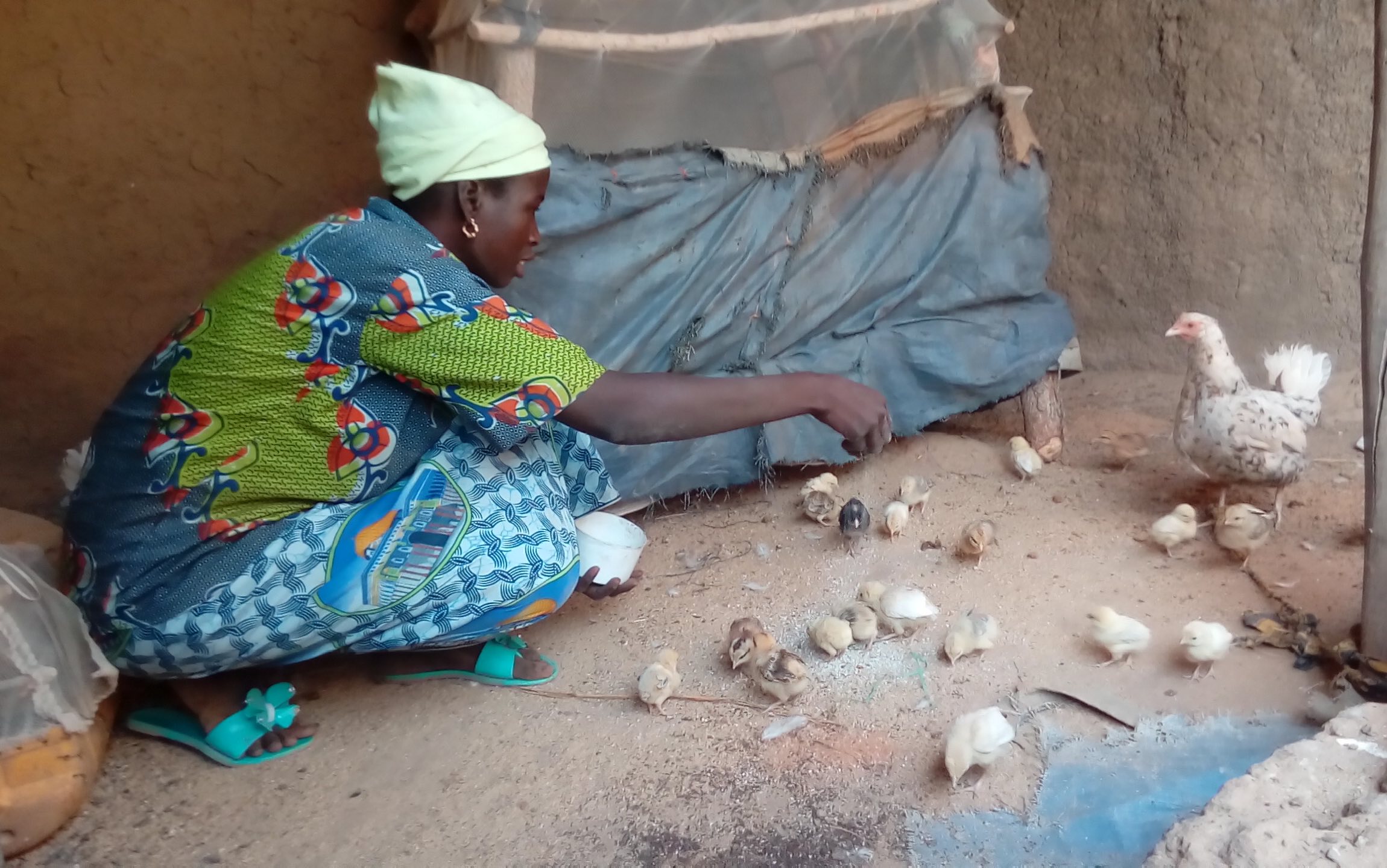Integrated interventions aimed at improving both livelihoods and nutrition outcomes are an increasingly important element of policy initiatives for rural development. Such interventions seek to both increase households’ engagement in value chains producing more nutritious foods, and increase consumption of those foods, often using a range of program elements. Rigorous evaluation methods such as randomized controlled trials (RCTs) can provide valuable evidence about the effectiveness of the whole intervention. However, these methods do not typically provide insights into the individual components of a program, and do not assist us in identifying the elements that are crucial in achieving any program effects.
We recently conducted a large-scale RCT analyzing one such program, Soutenir l’Exploitation Familiale pour Lancer l’Élevage des Volailles et Valoriser l’Économie Rurale (Supporting Family Farming to Launch Poultry Farming and Enhance the Rural Economy, or SELEVER), in rural Burkina Faso. The RCT tracked a sample of approximately 1,600 households in 119 communities over three years. Here, we report on new work that seeks to build on this trial to understand the effects of specific program elements implemented as part of SELEVER, finding a complex mixture of direct and indirect effects.
In this first phase of implementation, SELEVER aimed to increase household poultry production and to improve the nutritional status of women and children via a wide range of activities. Trainings on poultry husbandry and nutrition and gender were conducted at the village level; village-level groups were formed or strengthened as a platform for training (in the case of poultry, these were existing poultry producers’ groups); and home visits were conducted focusing on poultry vaccination and husbandry, as well as enhanced nutrition and gender practices.
The initial findings suggest that the intervention was effective in shifting some poultry practices at the household level—encouraging households in treatment communities to invest more in poultry inputs, and reducing poultry mortality—but also indicate that it did not raise overall poultry revenue or profits at the household level. There were also no meaningful effects on nutritional or gender empowerment outcomes.
There was, however, an intra-household shift in poultry production. At baseline, women report owning only a fraction the poultry owned by men: Only two to three mature birds on average for women, vs. 22 for men. In communities where SELEVER is implemented, women report higher levels of poultry ownership and more revenue and profits from poultry at endline, while poultry production in the jointly owned category shrinks. This pattern can be seen below; for each variable, the treatment effect for poultry owned by women (in red) and poultry owned jointly (in green) generally point in opposite directions.
While not large in absolute magnitude, these effects are large relative to women’s baseline level of poultry production: Women in SELEVER communities report on average one more chicken owned, relative to a mean of two in the control arms, and report increases in revenue and profits of around $1 relative to a mean of between $3-$4 in the control arm. The fact that women’s poultry flocks are expanding while flocks of jointly owned poultry are shrinking suggests some intra-household relabeling is occurring. Qualitative work suggests that women sometimes are reluctant to report owning their own poultry and report that poultry is jointly owned as a form of deference to their husbands. Exposure to SELEVER seems to have encouraged women to voice ownership over their own poultry, and over the associated revenue and profits.
In a follow-up analysis using structural equation modeling (SEM), we explored the role of different program elements in generating this shift in women’s poultry ownership. We focused on three broad elements: SELEVER poultry training and group membership; nutrition-gender training and group membership; and receipt of services from village vaccination volunteers (VVVs), a nationwide network of animal health service providers who are present in both treatment and control communities, but received some capacity building training as part of the SELEVER intervention. We use SEM to identify the contribution of each type of program participation to the overall intervention effect.
The results suggest that respondents’ directly reported participation in SELEVER intervention activities mediates less than half of the observed intervention effects on women’s poultry ownership, revenue and profits—but also that SELEVER had indirect impacts. The only program dimension that is consistently identified as a positive and significant mediator of the treatment effect is the receipt of household services from VVVs. As a mediating variable, SELEVER poultry programming is estimated to be positive but statistically insignificant, and the estimated coefficient for nutrition and gender programming is negative. This suggests that receiving vaccinations and other production advice from VVVs who had themselves received SELEVER training is a key program component encouraging women to expand their poultry flocks.
The fact that around half the overall program effect is not attributable to direct reported program participation may suggest that there were some broader shifts in social norms in the communities that participated in SELEVER that led to women increasing their engagement in poultry production. Even women who didn’t participate directly (or who perhaps participated to a limited extent, but did not disclose this participation) could be affected by broader community-level shifts in production norms. Further work around complex agriculture and nutrition interventions would benefit from continuing to understand what the role is of direct participation vis-à-vis broader community shifts in generating changes in household behavior.
Jessica Leight and Jessica Heckert are Research Fellows with IFPRI’s Poverty, Health, and Nutrition Division (PHND); Aulo Gelli is a PHND Senior Research Fellow.
This work was supported by the Bill & Melinda Gates Foundation, the IFPRI-led CGIAR Research Program on Agriculture for Nutrition and Health (A4NH), and the IFPRI-led CGIAR Research Program on Policies, Institutions, and Markets (PIM)







